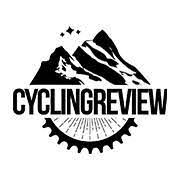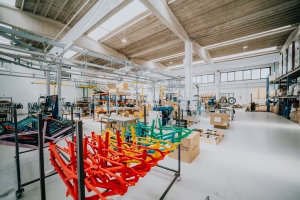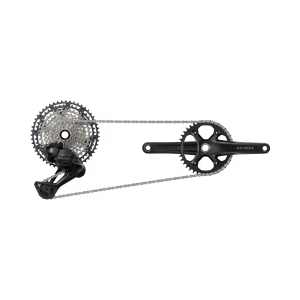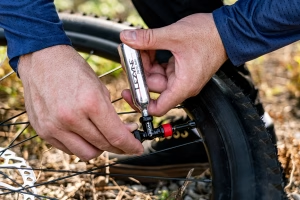What should I pay attention to when buying a new road bike? This is a common question for people buying a road bike. That is why we have written a huge article with tips for buying your new road bike. What do you know about the importance of a good crank length, when are road bikes on sale and how to calculate the right frame size for your road bike? And do you buy a new or a second-hand road bike? All questions we address in this article. Have fun with your new bike!

1. What will you use your new road bike for?
Want to go on long tours? Then it is important to have a comfortable bike. Will you be cycling in the mountains? Then you'll want to look at the weight of the bike. Do you want to cycle races? Then you want a bike that is fast. Will you use the road bike for commuting? Then you might want mudguards that can be mounted on it.
Ask yourself beforehand what you want to use the road bike for, so that the bike you eventually buy suits your needs. Buy the type of bike that suits what you want to use it for.
2. A new road bike or second-hand?
Another important choice. A second-hand road bike can be very good and for your budget you can certainly buy a nicer bike than a new one. The downside is that you have to (be able to) check everything yourself. Buying a second-hand road bike via Marktplaats is always tricky. You simply don't know the full history of the bike, Questions you can ask the current owner and things you can check are:
- How many kilometres were driven on it?
- When was the last maintenance service?
- If it is a carbon bike check the frame very, very carefully for damage, such as scratches and dents.
- Make sure you never go looking alone, but take someone with you. After all, two always see more than one.
- Look at the gears. Are they already quite worn? If so, they will probably have to be replaced soon and that is an expensive job.
As I said, we think it's best tricky to buy a second-hand bike from a private person. Be sure to check out the used bikes at your local bike shop or bike shops. These road bikes have just had a major service, often have new parts and sometimes you even get one or more months of warranty on them. Plus, you know that a bike shop doesn't sell junk so you can rest assured that the bike is good.
A new road bike is of course the absolute preference, here with you 100% be sure that your road bike comes straight from the factory. You get a warranty on the frame and the bike shop will often give you the first service for free. However, the price of a new bike is a lot higher than a second-hand road bike of course.
3. Determine your budget for your road bike
This is pretty essential. What do you want to spend on your bike? You already have a great entry-level bike from +/- €1,000 but you can go as crazy as you want, if you really have too much money lying around you can buy a bike the pros ride, which cost more than €15,000. Always keep your budget in mind when making your bike choices.
Make sure the quality of your bike stays in proportion to what you pay for it. For example, you can choose a very expensive frame and then put a cheap groupset and wheels on it. The quality of the frame will then be dwarfed by the rest of the components.
4. Where will you buy the road bike?
When you buy a road bike in a shop, you are buying from a flesh-and-blood person. They can give you advice, help you measure up and help you with practical questions about the bike and the choices you have to make in the process.
If you think you know what you need yourself, you can buy a road bike online. This can save you quite a bit of money; on an average road bike with parts, you can easily save hundreds of euros compared to the local bike shop if you buy smartly. Do bear in mind that you have to put everything together yourself, the warranty is more difficult to arrange and the delivery time of a bike can be longer.
5. Carbon or other material?
A bike made of carbon is the lightest material. You will particularly benefit from this if you want to cycle in the hills or mountains. The biggest advantage of the material is that it is so light, there is a golden rule that goes 'The lighter your bike, the more expensive it gets'. If you feel that your most weight savings are to be made on your own body, it might be wise to opt for an aluminium or steel frame. These are a bit heavier, but are generally more stable a a lot more durable.
6. Which bike brand suits you best?
Did you know that Italian brands are for posers? And that a Trek is the equivalent of a Toyota? As a beginner, you probably won't realise it, but the experts who have been touring in platoons and on the country's roads for years have an eye for it. Read the article at the friends of It is Koers here about which brands say what about the owner and, based on that, choose how you want to be seen on your new road bike.
Wondering what brands of road bikes are out there. We have a nice overview on the site!
7. Choose a shop
Buying a road bike can take a lot of time, and time is precisely something we often don't have much of. Of course, ideally you want to be on your new road bike the same day. To save time, you could narrow down your choices by choosing one bike shop where you will buy your bike. You can assume that every bike shop in the Netherlands sells good road bikes and can give you good advice. With a little research, you can find a good road bike seller in your area.
8. The size of your new road bike
A correct frame size will ensure you are comfortable on the bike and prevent injuries. The frame size is based on the inseam and is determined as follows: Place your feet 15 cm apart. Then measure the length from your heel to your crotch and multiply the result by 0.68 and round down. This is the bike size that fits you best. So for an inseam of 79 cm, a frame size of 79 times 0.68 is 53.72. Your frame size is then rounded down to 53.
This is obviously a simple way to determine the size of your road bike. Want to know more? Then read our article on determining the frame size for your road bike.
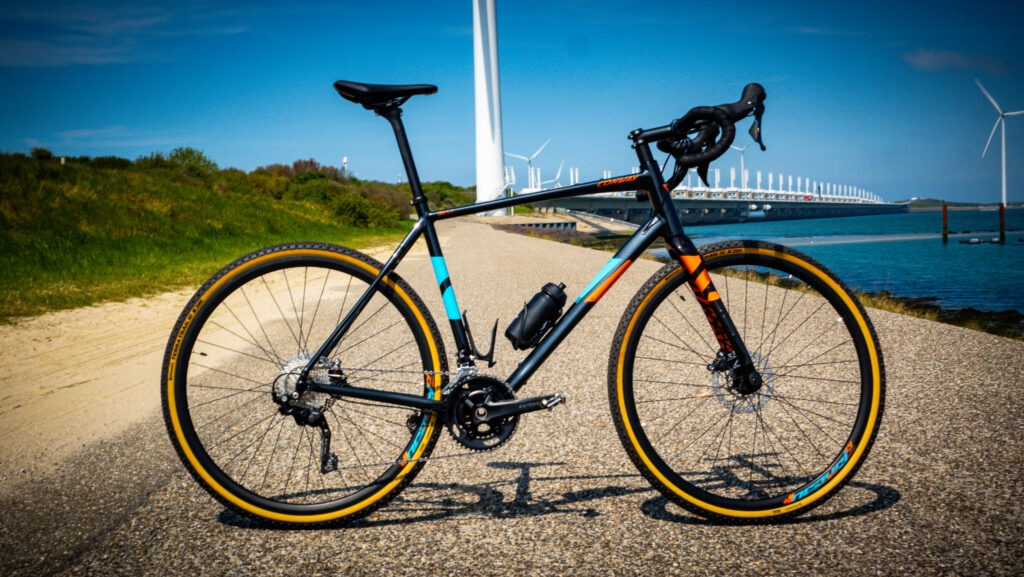
9. When are road bikes on sale?
The best time to buy your road bike is the autumn between October and January. This is when cycle shops have to get rid of their stock of 'old models' and individuals clear out their attic and discover that they have not sat on their bike for another season. With some detective work, you can get a good deal. The big disadvantage is that you will have to wait all year for it and postpone your cycling adventures on your new road bike until the end of the season.
10. Campagnolo, Shimano or SRAM?
Roughly speaking, there are three brands of groupsets. A groupset consists of all moving parts of the road bike, this includes the chain, derailleur, brake and the complete shifting system. Each brand has different types and to make it easy, I have made the following overview for each brand.

Do bear in mind that most bike shops around the world generally stock Shimano. Campagnolo becomes a bit trickier, specific parts will have to be ordered by most bike shops. The same goes for SRAM, although SRAM cassettes and other parts are 1-to-1 interchangeable with Shimano, but if you consciously choose SRAM, you will of course prefer original parts on your bike.
11. Single, compact, double or still a triple?
'A three blade is for a sissy' is a common saying among cycling tourists. However, the truth is that entry-level race bikes are still sold with three front sprockets. Whereas it used to be standard, now it's really not necessarily necessary. You have a huge range of a total of 30 gears with three front sprockets, but an 11-speed and two front sprockets will also get most people over all the hills and mountains. Want to cycle in the mountains or hills and you're not trained (or don't feel like running the risk of pedalling too heavily)? Then get a triple or opt for a mountain gear.
I would only recommend the classic double if you are going to ride on the flat. With 39/52 or 39/53 in front and an 11-25 cassette in the rear, you will be fine in the Netherlands and Belgium. And should that not work, then (temporarily) changing the cassette, for example to 11-28 or 11-30 is a possible option. If you go into the mountains with a traditional double, you really need a very good condition. If you don't have enough confidence for that, I would recommend opting for a compact.
A compact crankset is a variant of the classic crankset with two chainrings that has combined the advantages of the triple and the classic double. This is the most common choice these days. Especially with 11 (or even 12 or 13) rear gears, it gives you a very long range and allows you to get around on Dutch dikes, but also in high mountains. The smallest chainring is smaller than the classic double. The combination 34/50 is the most common. But if you ride a lot on the flat, you could also opt for 34/52.
As a final option, you can choose a road bike with only one front blade, called the 1x version. These are mainly mounted or gravel bikes and cyclocross bikes. The advantage is that it is almost impossible for your chain to fall off at the front due to the lack of a front derailleur and the use of a chain catcher. The disadvantage is a limited range in gears. There are already group sets with 13 rear gears, but that is still well below the 22 gears of 2×11 speed.
12. Electric switching?
Should you want to be sure that your derailleur does not overshoot and that you are in your correct gear within 0.02 seconds, electronic shifting might be for you. Besides, your wallet needs to be well-stocked, because at the moment it is only possible in combination with the better groupsets in the Shimano, SRAM and Campagnolo segment. At Shimano it is called Di2 and at Campagnolo EPS, at SRAM it is called eTap. Want to go all the way with your friends or have you won the LOTTO? Then you can even look into wireless shifting!
13. The choice of your wheels
Choosing your wheels are just as important as choosing your frame and choosing your groupset. A good set of wheels can really make you ride faster. This is mainly because good (read expensive) wheels can better transfer the power you deliver with your legs to resistance on the road. This therefore allows you to cycle faster with the same power. This is partly due to stiffness and aerodynamics.
Another aspect that has an influence are the number of spokes in the wheel. Generally speaking; The fewer spokes the better. But also don't forget to take your weight into account. If you are heavier, you need more spokes to distribute your weight among them. They absorb the blows you give by riding over bumps, so buying the lightest set of wheels if you weigh over 100 kilos is not recommended.
14. The choice of tyres
Make sure you have good tyres on your wheels. I will give a very short and clear tip here, as there is only one brand and type that is generally considered the best tyres for your road bike: That is Continental! For the road bike it is the Continental Grand Prix 5000 and for the gravel bike it is the Terra Trail. These tyres are puncture-resistant, and have good grip.
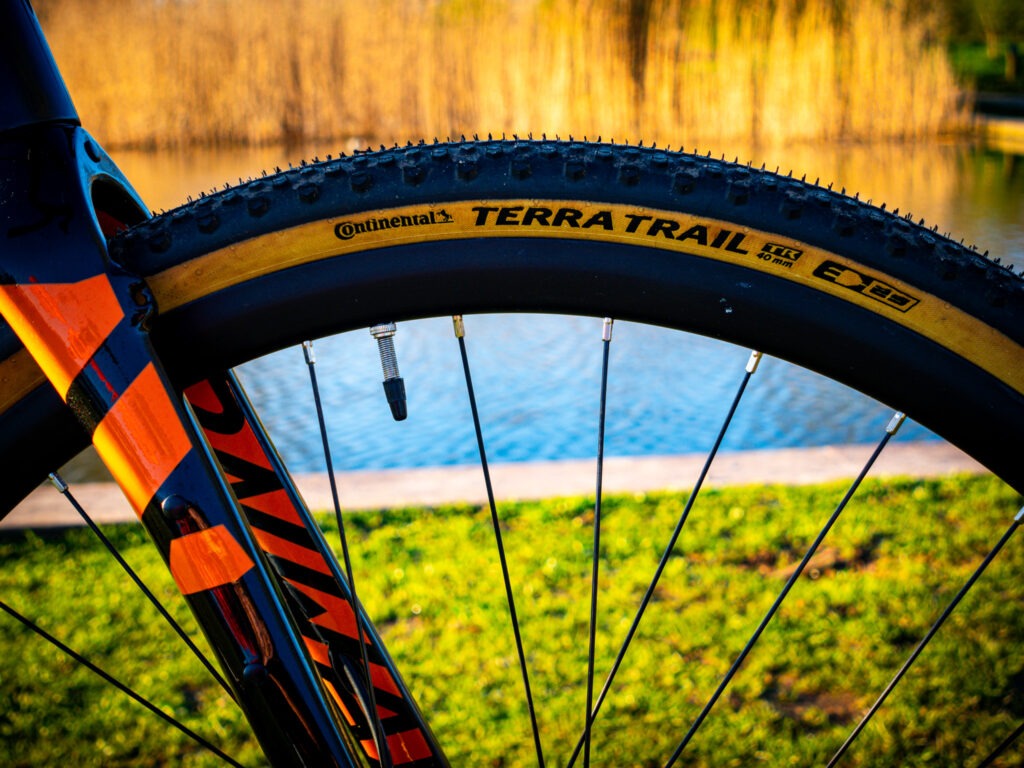
15. Determine the length of your stem
It is a small part, but the to have the ideal posture on the bike there are different sizes length of the handlebar stem. For example, if you have a long torso in relation to the length of your legs, it is wise to fit a longer handlebar stem so that you sit in a good position when cycling. If you are unsure about this, consider doing a bikefit.
Want to know what a bikefit is? Then read our article explaining all about bikefitting
16. Which type of saddle suits you best?
If you put the wrong saddle on your bike, the nerves and tendons around the sit bones could be overloaded. This can pinch them off, causing saddle pain. The position of the saddle is also important so that you sit exactly on the two sit bones, the pressure is thus in the right place. With a good saddle, you are guaranteed to cycle without saddle pain. However long the ride! Which saddle you need depends, among other things, on the distance between the two sit bones. These are the two lower bones of the pelvis. At your bike shop you can do a saddle measurement that will make this clear. It is always custom-made, so don't ignore the advice your bike shop can give you on which saddle suits you best.
Want to know more about saddle sores? Read our article with tips to prevent saddle sores.
17. Determine your crank length
Crank length is the distance from the centre of the bottom bracket to the centre of the pedal axle. After the saddle, it is the most underrated aspect of cycling well. The crank length is very important because, together with the pedal frequency, it determines how much effort it takes to gain speed. So the right crank length can make a lot of difference in cycling performance. To determine the crank length, the inseam again matters. Standard cranks on most bikes are 172.5mm long. You can go shorter to 170mm or longer to 175mm.
18. Cycling computer. To measure is to know
The great thing about cycling and cycling is that you are responsible for your own performance and can therefore improve yourself. Like a team sport, you are dependent on the performance of others. With a good cycling computer, you can track your progress perfectly. You can choose a bike computer without GPS or a GPS-enabled bike computer. The advantage of a bike computer with GPS is that you can upload the files you record to sites like Strava where you can check your progress even better. You can make it as crazy as you like, with heart rate monitors, pedal frequency monitors and possibly even wattage meters a true data freak can indulge.
19. Don't forget to buy a helmet
Without a helmet, you are pretty much the biggest dork in the whole country. So don't be so stupid as to cycle without a helmet.
20. The importance of colour
With the colour of your road bike, you can radiate a lot. Do you go for chic matt black, fluorescent yellow, white (hard to keep clean) or a natural shade of green? Does the colour of the bike match your cycling clothes, e.g. cycling club clothes? In short, plenty of things to consider when picking the colour of your bike.
21. Choose your pedals
Click pedals have become indispensable in today's cycling world. Whereas in the past you would sometimes see a lost cyclist with toe clips, today there is a pedal for every cyclist and every use. The two most popular click systems for road bike pedals are Look and SPD SL. These two click pedals are not much different from each other, so it makes little difference which one you choose in my opinion. You can, however, choose between different cleats with more or less grip, so you won't slip on your way to the bar during the coffee break. There is also some difference in the pedals, the more expensive versions generally last a bit longer and are a bit lighter, but to be honest, they don't really differ much.
22. Make sure you look good!
Now you've bought a fantastically beautiful bike. Then, make sure you look a bit sophisticated yourself by scoring a nice cycling outfit.
23. Do a test drive!
Ordered the bike, the bike shop has fitted it to your measurements and it is ready to be picked up. Then first take a test ride, which means not just going back and forth across the car park but a lap of at least 5 kilometres. After a good test ride, you can indicate what you want to have adjusted. Is your saddle too low? Is your derailleur not adjusted properly? All such small details can be fixed immediately after a good test ride. By the way, most bike shops don't mind if you come with these questions during the week after purchase.
24. Don't forget your maintenance kit!
Now that you've got your new bike in your own shed, of course you're going to put lots of miles on it right away. But make sure you take good care of your new love. So don't forget to buy a cleaning kit and a chain maintenance kit.
So, now you're all set to buy your new road bike!
